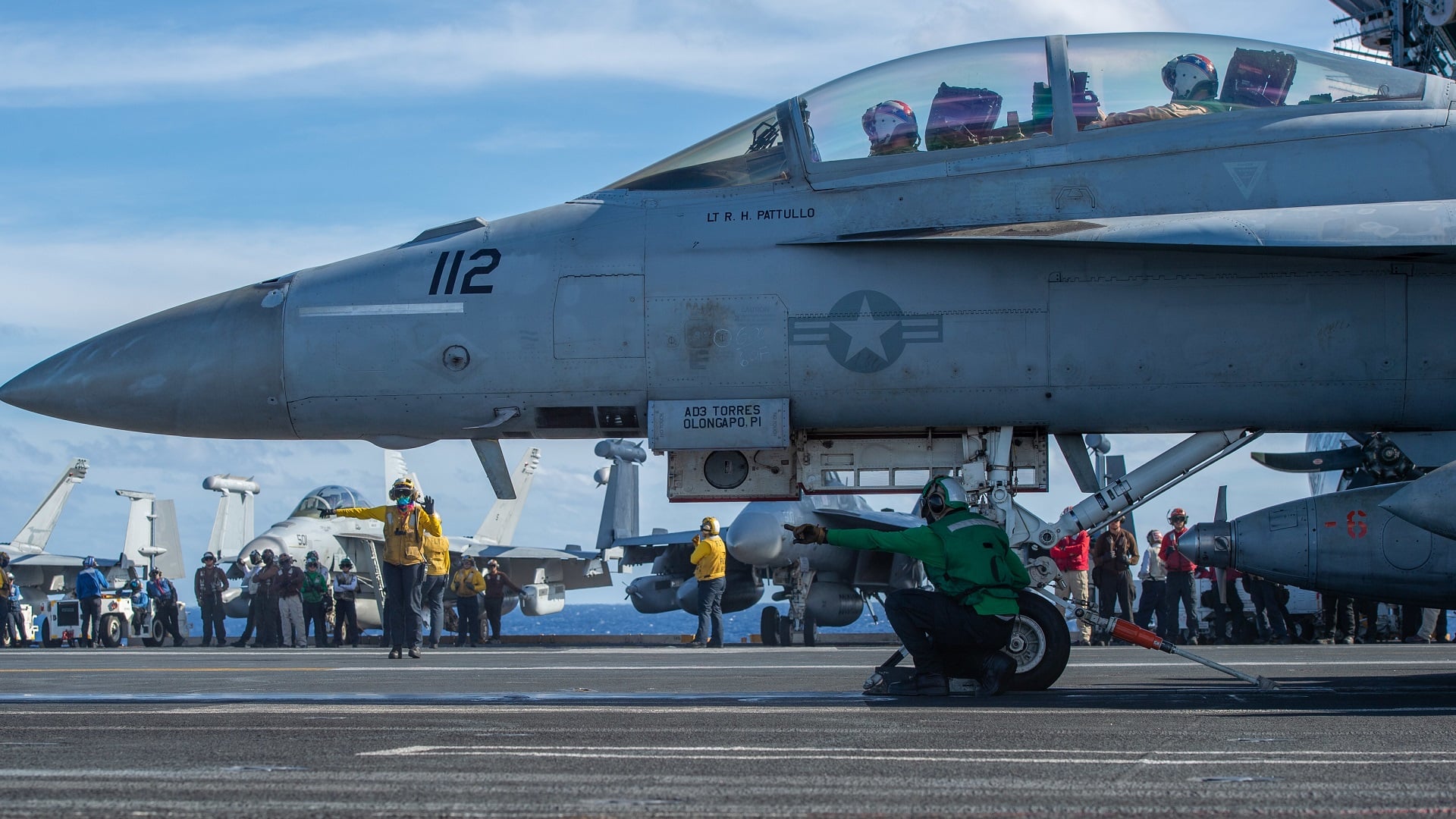In April, the U.S. Navy sailed its first drone boat through the Middle East’s strategic Strait of Hormuz. This crucial waterway not only supports the passing of roughly one-fifth of the world’s oil supply, but also serves as a major point of contention between Iranian forces and American sailors. The strait connects the Persian Gulf to the Gulf of Oman and often sees a variety of international merchant tankers and other vessels pass through. Iran has historically used its positioning close to the strait to threaten American and other foreign-run ships.
While Iran’s Navy may not be as advanced, the regime likes to flex that it is still capable of disrupting the global oil market. When the L3 Harris Arabian Fox MAST-13 “drone speedboat” sailed through the Strait last month, Iran’s Revolutionary Guards Corp (IRGC) took notice. Although Iranian forces did not antagonize the ship, similar occurrences in the past have had different outcomes.
Equipped with sensors and cameras, the MAST-13 41-foot speedboat traversed through the Strait of Hormuz alongside the two U.S. Coast Guard cutters the USCGC Charles Moulthrope and the USCGC John Scheuerman. Both cutters are among the ships patrolling the Middle East waters in support of the 11-nation U.S.-led coalition the International Maritime Security Construct. The U.S. Navy’s Bahrain-based 5thfleet often patrols the Strait of Hormuz in addition to other Middle East waters in order to preserve American interests and participate in international trade. The Navy has been sailing the MAST-13 on a variety of operations in the region including some of the international military drills that have occurred recently. The MAST-13 features a video feed that can transmit footage back to shore and to other ships at sea. This capability is significant considering the Navy’s efforts to seize illicit Iranian weapons headed to Yemen.
According to the Associated Press, Iranian forces did detect the MAST-13 but did not approach the drone. Commanding officer of the USCG Charles Moulthrope told AP that “The Iranians observed the unmanned surface vessel transiting the strait in accordance with international law,” adding that the Navy is “on the cutting edge of integrating advanced unmanned technology into our maritime patrols.” Last year, the 5thfleet launched a special drone task force, aiming to possess a fleet of more than 100 sailing and submersible drones. Today, this special Task Force 59 is prioritizing how to best leverage the AI and unmanned systems to better aid the service’s mission sets at sea. Similar to how the Air Force’s Next-Generation Air Dominance (NGAD) program incorporates unmanned drones accompanying piloted fighters, the Navy believes integrating unmanned sea vessels alongside its crewed ships with enhance the service’s capability.
Last year, Iranian forces temporarily captured two American unmanned surface vessels in the Red Sea. Operated by the 5thfleet, two Saildrone Explorer USVs were seized by an Iranian Frigate IRIS Jamaran (FFLG 76). As explained by the U.S. Naval Institute, “At around 2 p.m. (local time) on Sept. 1, U.S. 5th Fleet detected the Iranian ship approaching both unmanned vessels and removing them from the water. U.S. Navy guided-missile destroyers USS Nitze (DDG 94) and USS Delbert D. Black (DDG 119) were operating nearby and immediately responded. Nitze and Delbert D. Black also launched an MH-60R Sea Hawk from Helicopter Maritime Strike Squadron 48,” according to 5th Fleet. Nitze and Delbert D. Black remained on scene communicating with the Iranian warship to deescalate the situation and recover the seized Saildrones. The Iranian warship released the Saildrones at 8 a.m. on Sept. 2.”
Since 2019, the IRGC has carried out a handful of attacks targeting international vessels in the Persian Gulf. In addition to tanker attacks, Iran has also harassed U.S. Naval vessels with other ships and even airframes in recent years. Last week, an Iranian-state news outlet known to be the mouthpiece for the regime came out in support of blocking off the Strait of Hormuz from international vessels. The report argues that the countries that have sanctioned Iran should be punished and blocked from entering the strategic waterway. Some analysts believe Iran has been preparing to launch such a blockade for years and possess the “unique asymmetric warfare” capabilities necessary to do so. Since the Strait of Hormuz is so vital to the world’s oil supply, escalating tensions in the Mid East waters is concerning.
MORE: Joe Biden Won’t Send F-16 Fighters to Ukraine
MORE: Why Putin Should Fear the F-16 Fighter
Maya Carlin, a Senior Editor for 19FortyFive, is an analyst with the Center for Security Policy and a former Anna Sobol Levy Fellow at IDC Herzliya in Israel. She has by-lines in many publications, including The National Interest, Jerusalem Post, and Times of Israel. You can follow her on Twitter: @MayaCarlin.

